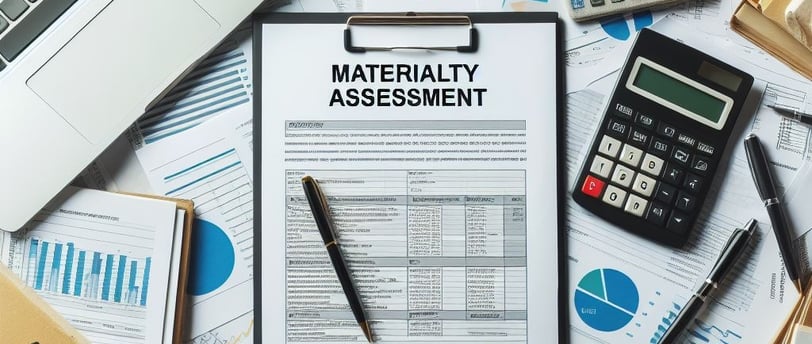Materiality Assessment for Small Businesses
Small steps, big impact.
Omar Rebaza
12/11/20232 min read


Sustainability isn't just a buzzword—it's a journey that begins with understanding and prioritizing the most significant environmental, social, and economic impacts. This blog unravels the concept of materiality assessments, providing small businesses with insights into why and how to conduct them, and how these assessments can be transformative for both the business and the broader community.
Decoding Materiality Assessments: Why They Matter for Small Businesses:
Materiality assessments are a cornerstone of sustainable business practices, helping companies identify, prioritize, and become more effective. For small businesses, these assessments serve as a roadmap to navigate the sustainability landscape effectively.
Key Steps in Conducting a Materiality Assessment for Small Businesses:
Define the Scope and Boundaries:
Begin by clearly defining the scope of your materiality assessment. Identify the boundaries of your assessment, considering both internal and external factors that may influence or be influenced by your business operations.
Identify Stakeholders:
Recognize and engage with your stakeholders. These could include customers, employees, suppliers, local communities, and regulatory bodies. Understanding their perspectives helps uncover a comprehensive range of potential material issues.
Gather Data and Information:
Collect relevant data and information pertaining to your business operations. This could include energy consumption, waste generation, supply chain practices, employee satisfaction, community engagement, and more. Ensure that the data gathered is both quantitative and qualitative.
Prioritize Material Issues:
Once you have a wealth of data, prioritize the material issues. Consider their significance to stakeholders, the potential impact on the business, and their alignment with industry standards and best practices. This step ensures that your focus is on issues that truly matter.
Engage Stakeholders in the Assessment Process:
Actively involve your stakeholders in the assessment process. Seek their input on the identified material issues and gather insights into their expectations and concerns. This collaborative approach fosters a sense of shared responsibility for sustainability.
Map Material Issues to Business Goals:
Connect the identified material issues to your business goals and objectives. This alignment ensures that sustainability efforts are integrated into the overall business strategy, contributing to long-term success and resilience.
Establish Key Performance Indicators (KPIs):
Develop measurable Key Performance Indicators (KPIs) for each material issue. These KPIs serve as benchmarks to track progress over time, allowing you to demonstrate tangible improvements in your sustainability performance.
Create an Action Plan:
Based on the prioritized material issues and established KPIs, create a comprehensive action plan. Outline specific initiatives, timelines, and responsible parties for addressing each material issue. This plan becomes the blueprint for your sustainability journey.
Communicate Transparently:
Transparency is crucial in sustainability. Communicate the outcomes of your materiality assessment, the identified material issues, and your action plan with your stakeholders. Clear and honest communication builds trust and credibility.
Conclusion: Charting a Sustainable Future for Small Businesses
For small businesses, materiality assessments are not just about compliance—they're about resilience and relevance in a changing world. By defining the scope, identifying stakeholders, gathering data, prioritizing material issues, engaging stakeholders, mapping issues to business goals, establishing KPIs, creating an action plan, and communicating transparently, small businesses can chart a sustainable future that benefits both the business and the communities it serves. Remember, small steps guided by meaningful assessments can lead to transformative impacts and create a lasting legacy of responsible business practices.
